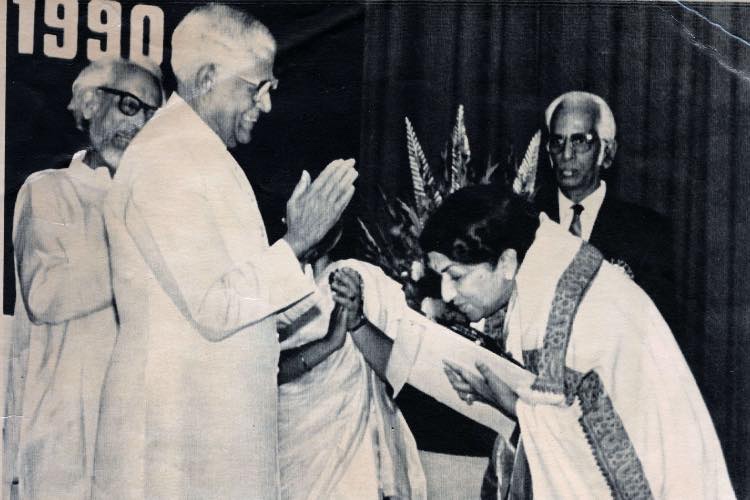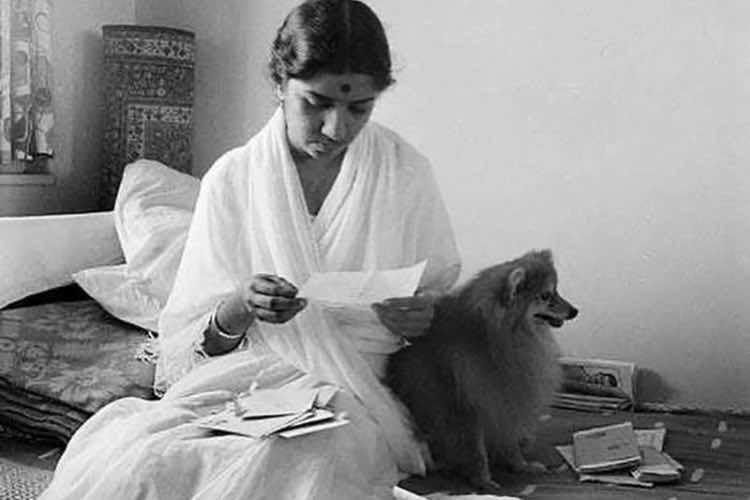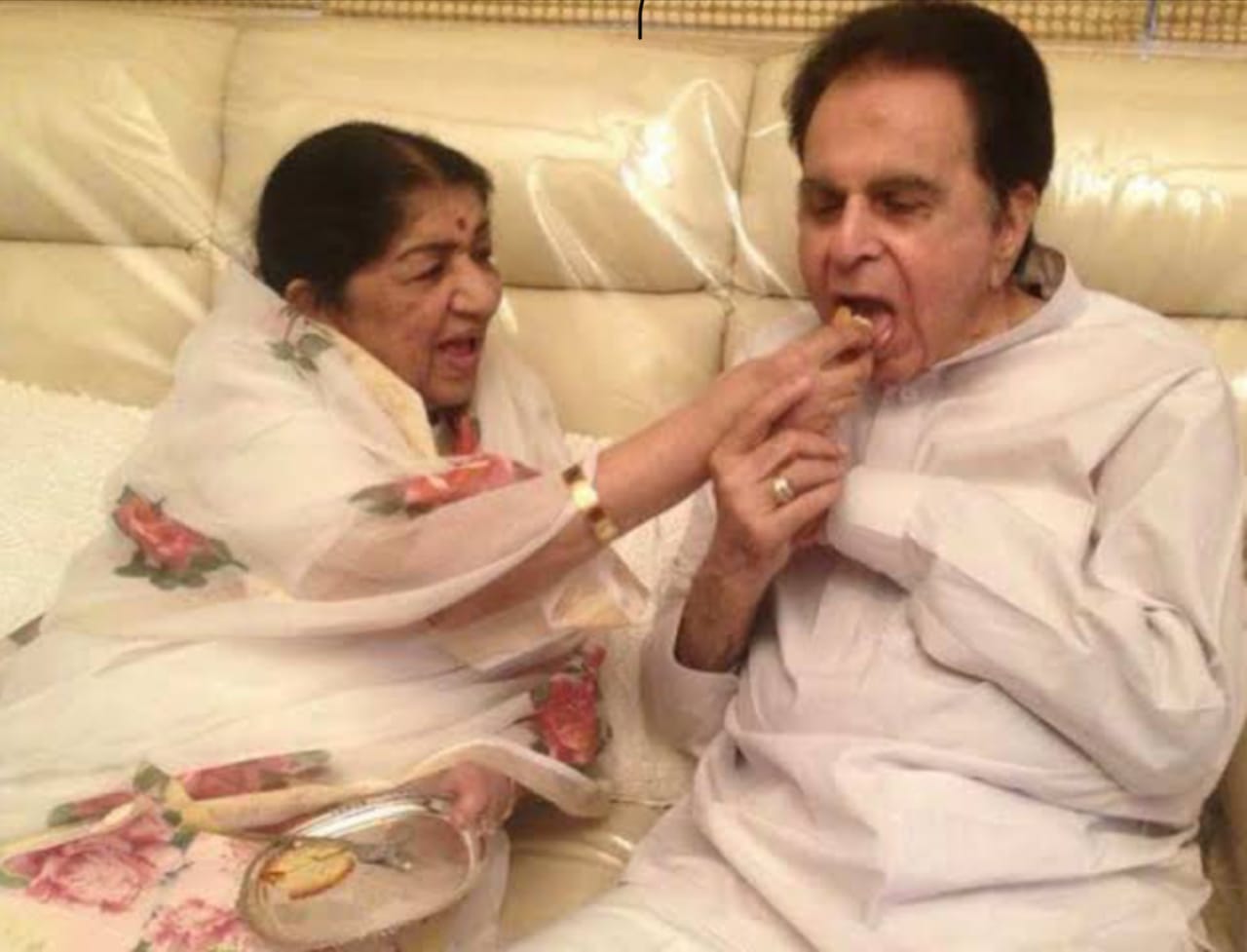
Aasha Khosa
As a reporter, one day during the Parliament session, I and my friend Gargi Parsai of the Hindu newspaper, were walking in the Parliament building’s corridor when we spotted her. Wearing a white sari wrapped around her shoulders and her hair tied in two long and thin plaits, she walked slowly with her tiny anklets jingling in unison; it was the Divinity personified walking in our direction.
Yes, my heart was pounding and yet I gathered my wits and made effort to avail myself of a lifetime chance of speaking with Lata Mangeshkar. Suddenly, I felt Gargi’s cold hand tightening the grip on my hand. I looked at Gargi; she had frozen in awe of her hero. “I can’t speak; I l adore her, I can’t speak,” Gargi muttered. Somehow, I dragged Gargi and both is us said Namaste to Lataji.
Lataji stopped and greeted us. She even asked us for some direction. A few words she spoke and her wide smile thrown at us was my lifetime experience of divinity; it was surreal and gives me goosebumps even today.
Lata Mangeshkar in her trademark white sari
That was one of the rare days when Lataji had come to attend the Rajya Sabha, where she was a nominated member.
I don’t even want to think what Gargi is going through today as Lata Didi, the divine voice has merged with divinity.
However, I, a common Indian, who has grown hearing Lata’s golden voice be it her Bacche man ke sacche of our childhoods day; her romantic duets with another legend Mohammad Rafi that helped us feel love and rebel; her songs of pathos and pinning that made us value love, her patriotic numbers that motivated us to work for our country have all gone into making prople of my generation. It’s no exaggeration to say that Lata’s songs shaped the emotions, behaviour, and thinking of at least three generations of Indians.
To me, Lata Mangeshkar’s life symbolizes sadhana, a concept that is beyond duty, learning, and probably closest to dedication plus evolution, in the English language and culture. She first dedicated her life to raising her family left headless after he father Dinanath Mangeshkar passed away when she was only 13. Being the eldest of her five siblings, Lata took up the responsibility of the family, and singing was the only way she could earn.

Lata Mangeshkar at her home
Going by today's tech-enabled singing, the younger generation may think Lata was born with the golden voice. The fact is that she evolved from being initially labeled as a “shrill” voice to one that made her the prima dona of the Bollywood playback singing. This precisely is sadhana – practice, reverence, and experimenting with music every day and all through one’s life.
A spinster, Lata Mangeskar has remained wedded to her music.
In an interview with a Pakistani TV journalist Kamran Shahid, Lata Mangeshkar described her challenges. She said once while traveling in a local train, actor Dilip Kumar wondered how would a “Marathi’ girl sing the heavily Urdu-infused Hindi songs back then.
Lata Mangeshkar took the cue and employed a Moulvi Sahib to learn and perfect her Urdu pronunciation as a result she could sing Bekas pe karam kejiye…with as much devotion as she sang the soulful Satyam Shivam Sundram… and Allah tero naam..
She told Kamran that she believes in all religions and it’s no big deal for her to sing a Naat. Lata mangeshkar perpetuated and disseminated the the Indian version of secularism, sarva dharma sabhava (unity of religions).
Lata Mangeshkar was the rakhi-sister of Dilip Kumar who he addressed as Yusuf Bhai. Their relationship is legendary.
As the Indian music industry is teeming with talents, there is no denying the fact that filling the void that Lata Mangeshkar left will be a herculean task.
 Legend in one frame: Lata Mangeshkar with her Rakh-brother Dilip Kimar
Legend in one frame: Lata Mangeshkar with her Rakh-brother Dilip Kimar
Lata Mangeshkar made many Indians including Prime Minister Jawahar Lal Nehru emotional and shed a tear for those who laid down their lives fighting on the icy Himalayan heights against the Chinese in 1962 with her Aye Mere Watan ke logon…
It was a perfect tribute to the legend as she lay in a hospital bed in Mumbai when the Indian Military bank replaced a foreign tune with Aye mere watan.. in this year’s Beating the Retreat ceremony of the Republic Day.
The rendition made the nation cry again.
Also, one wonders if Lata Mangeshkar, whose love for cricket was known to everyone, left her body after the Under-19 Indian cricket team had clinched the World champions trophy in Antigua.
